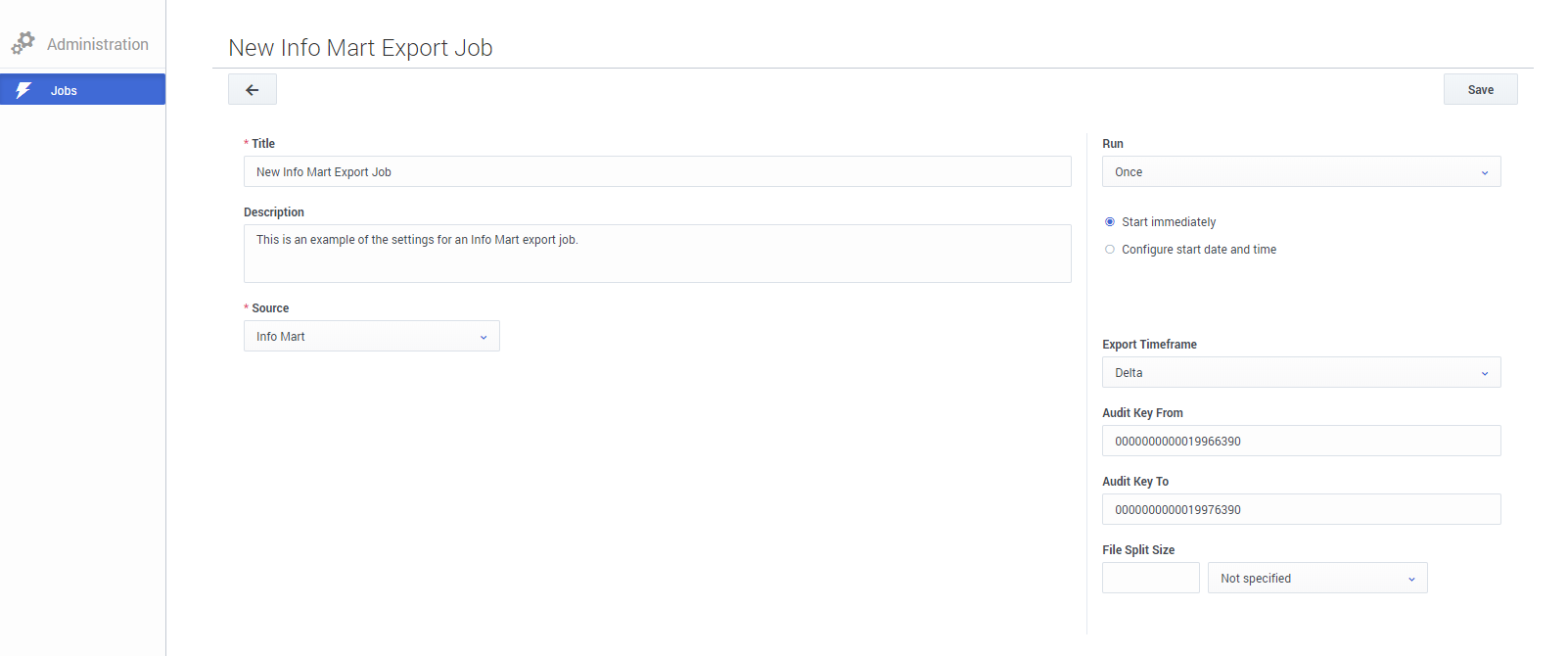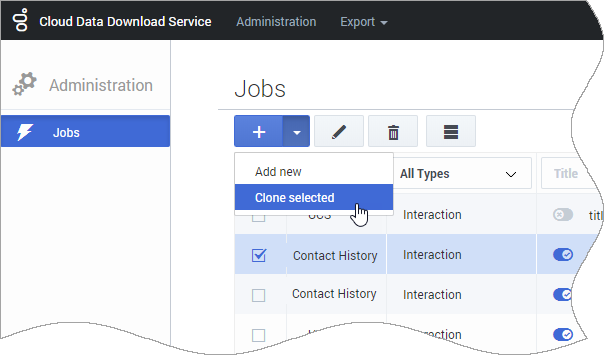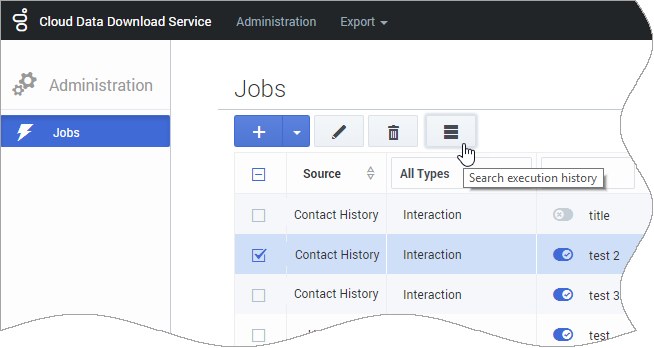Contents
Administration
From the CDDS Administration menu, you can access the Jobs page. The Jobs page displays a list of your data export jobs. From here, you can create a new data export job or monitor and manage existing ones.
The page provides details about each job, such as data source, job type, latest status, and date when each job last ran. If a job is still running, the Latest Status column features a status bar to indicate the progress of the active data export job. If you hover your mouse over the bar, it displays the estimated time remaining until the job completes.
Adding a new job
To create a new job, click the Add new job button:
This opens the job editor page, where you can specify the settings for the new job. Mandatory fields are marked with an asterisk (*).
You must give the job a Title. You can also add a Description, but this is optional. You must also specify the data Source. You can choose either Contact History to export data related to contacts and interaction data, or Info Mart to export historical reporting data.
Depending on the type of source selected, there are different job settings available:
Setting up a Contact History export job
If you select Contact History as the source, you must also specify the data Type. You can select either Interaction or Contact.
By default, Media Types is enabled for all. If you turn the slider off, you must select at least one media type (for example, Chat). You can add multiple media types.
Use the Run setting to specify how often to run the job. You can then choose to run the job immediately or schedule it to start at a specific date and time.
The Export Timeframe setting lets you export all data or just the data for a specific time period. If you select Fixed interval, you can then specify the Start and End dates for the export.
By default, the data is exported as a single file. If you want to break the exported data into a set of smaller files, use the File Split Size setting to specify the size of each file.
When you are finished setting up the job, click Save.
Setting up an Info Mart export job
If you select Info Mart, the settings for Type and Media Types are not available.
Use the Run setting to specify how often to run the job. You can then choose to run the job immediately or schedule it to start at a specific date and time.
The Export Timeframe setting lets you select either All data to export all of the available data, or Delta to export only the data that was not exported by any previous job.
If you select Delta and are running the job Once, you can also specify the Audit Key From and Audit Key To details to indicate the range of data you want to export. For example, you could enter the audit keys of two previously-downloaded Info Mart export files to capture any data for the audit keys within that range (see the example, above). Otherwise, for recurring jobs, Delta captures only the data that was not exported during the previous execution of the job.
By default, the data is exported as a single file. If you want to break the exported data into a set of smaller files, use the File Split Size setting to specify the size of each file.
When you are finished setting up the job, click Save.
Cloning a job
If you want to create a new job that is based on the settings of an existing job, you can clone the job.
Select the job you want to clone and choose Clone selected from the dropdown menu. This opens the job settings editor.
You can keep the existing job settings, or make any desired changes. For example, you might want to give the job a different Title or adjust the range of the Export Start/End dates.
When you are finished, click Save.
Suspending (and resuming) a job
Use the slider to change the state of a job to suspended or active.
Editing a job
Select the job you want to edit and click the pencil icon:
When you are finished making changes, click Save.
Deleting a job
Select the job you want to delete and click the trash icon:
Viewing the job history
If you select a job and click the collapsed (or "hamburger") button, it takes you to the History page, where the results are filtered to only show the history of the selected job.






